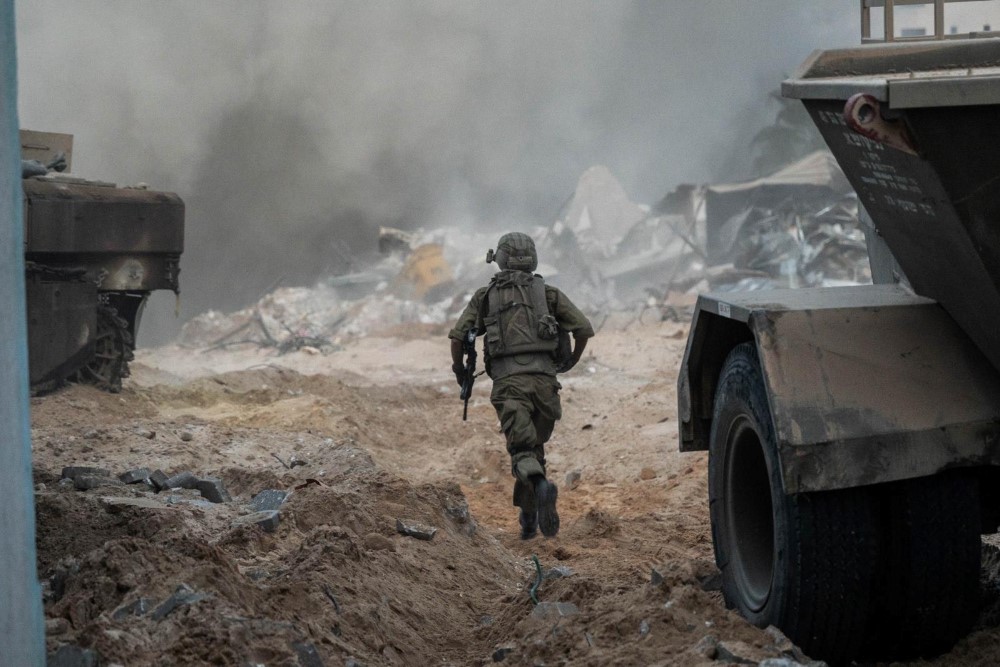
The aftermath of the October 7 assault on Israel exposed a series of strategic miscalculations by Hamas. As the IDF continues to dismantle the group’s terror machine, the war led to disaster for both Hamas and Gaza.
The invasion from Gaza, driven by three key errors in judgment, aimed to inflict severe damage on Israel, trigger a regional war, and bolster the strategic position of Hamas and Iran.
But as it turned out, Hamas misjudged its own capabilities while misreading Israel’s and Iran’s response.
3 Hamas miscalculations
Error 1: The Hamas plan anticipated a prolonged incursion into Israeli territory by thousands of heavily armed terrorists. The intention was to seize control of multiple communities and military installations, engaging in sustained combat against the IDF for long weeks.
However, Hamas was quickly overwhelmed by the swift and decisive Israeli response. The IDF neutralized all terrorists and pockets of resistance inside Israel within days. This enabled Israel to shift focus to offensive operations within Gaza sooner than Hamas expected, escalating the conflict well beyond Hamas’ control.
Error 2: Hamas did not believe that the IDF would mount a large-scale invasion of Gaza, according to captured terrorists interrogated by Israel. This assumption, based on exaggerating the Israeli fear of casualties, led Hamas to concentrate its defenses primarily against aerial bombardment and build a vast network of tunnels, Ynet reported.
Yet this defensive doctrine proved lacking against the IDF’s ground incursion, leaving Hamas exposed and vulnerable to Israel’s overwhelming military power. Moreover, tunnels were mostly built as shelters rather than sites of potential combat, enabling the IDF to advance underground with relative ease and destroy numerous strategic sites.
Error 3: Hamas pinned its hopes on full-scale support from the Iran axis, anticipating a regional conflict that never materialized. Secret documents recovered by the IDF in Gaza suggest that Tehran promised full backing, or at least that this was the Hamas perception.
In reality, Iran and its allies, including Hezbollah, opted for a cautious approach. The deployment of US military assets to the region and rapid IDF mobilization of forces to the north likely factored into the Iranian decision.
One way or another, Hamas found itself isolated, facing a formidable adversary without the promised reinforcement.
Hamas military failure
The cumulative impact of these miscalculations has been devastating for Hamas, and for Gaza. In long months of fighting Hamas completely failed to halt Israeli advances, incurred devastating losses, and saw the destruction of its weapons industry.
Moreover, as the war dragged on, Israel was able to eliminate an increasing number of Hamas leaders and high-ranking commanders.
By now, large swathes of Gaza lie in ruins, including civilian areas near the border used as launching pads for attacks on Israel.
Hamas now clings to hopes of surviving the war in some form, but the group’s situation looks grim. The once-formidable Gaza terror apparatus has been largely demolished, while local residents face harsh living conditions and an uncertain future.
Moreover, beyond the immediate impact on Hamas, the October 7 assault may signal a strategic downturn for the Iran axis. With Gaza down and Israel reassessing its security doctrine, Tehran lost a vital regional stronghold and may find itself facing a more determined and capable rival in the months and years to come


